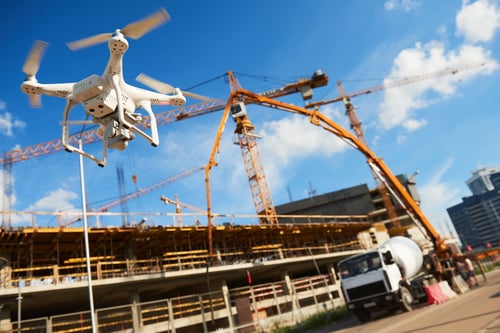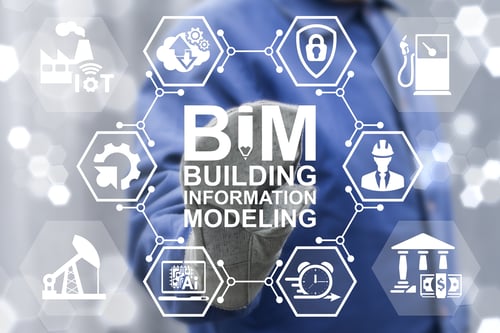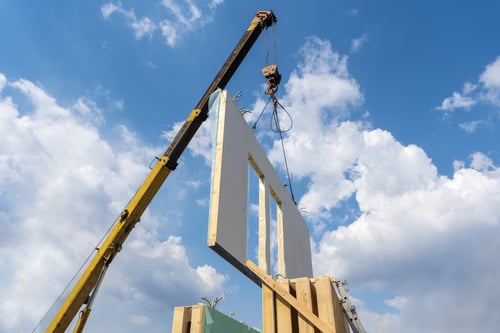Fall in Love with Construction Technology
With Valentine’s day right around the corner, it is important that you keep your loved ones close. Whether it be your significant other, family, or friends, as a CM, PM, or GM, you also need to stay side by side with the current construction technology trends. It’s time to move on past 2019 and enter 2020 with open arms to avoid falling behind on trends! Construction technology trends like automation, sustainability, and prefabrication are reshaping the heart of this industry.
Over the last few years, there have been many changes in the construction industry due to continuous growth and competitiveness. As a company, you must stay up-to-date and relevant in the technology world to remain competitive. Here is a list of construction technology trends that can increase your company’s overall efficiency & productivity that your team will LOVE.

Table of Contents
Ready to Taste the Sweetness that Construction Management Software Provides
Not too long ago, construction management was done with a pencil, paper, and a process. Now there are standardized procedures done in real-time that allow you to enter data, workforce information, and documentation into one secure location. Many project management solutions serve construction companies by bundling scheduling, project management, and timekeeping properties. Construction management software provides accountability in document control which is helpful so you can search for a document by searching and not sorting through piles of paper. An integrated platform that holds submittals, daily reports, purchase orders, and change orders is useful when on the go. As project management solutions become more advanced, it might be time to take a break with your older construction management operations on pencil and paper and try a software solution.
Are you Nuts and Bolts over Robotics?
Different types of robots are used in the construction industry. Robotics in the field are used for building bridges, laying bricks, inspecting buildings, demolition, etc. Until recently, the construction industry was one of the least automated industries in labor productivity. Robots are under development and susceptible to a robot revolution for significant roles in the construction process. Especially in commercial construction, robots have the potential to excel because they shine in repetitive tasks in controlled environments. Digitalization and automation in the construction industry have yet to realize the benefits of robotics.

Love is in the Air with Drones
Drones are also known as Unmanned Aerial Vehicles (UAV’s). They are useful on construction sites for the purpose of surveying job sites to ensure workers are not in dangerous situations and environments. Drones can gather information for survey data and overall increase safety, accuracy, and efficiency on the job site. With drones, they survey and scan from an aerial view to collect data. Then, with this data, you can estimate and determine the necessary amount of materials to reduce excess costs.
Imagine your Construction Site with Augmented Reality
Virtual and augmented reality has been around for a few years now, but recently, the construction industry is finding many uses for it in the future. Augmented reality incorporates virtual elements into real surroundings. Virtual reality allows the user to experience the complex logistics of the building in their perspective. It also allows them to get a more accurate gauge of the project up and close.
On CLOUD 9 with Mobile Technology

A few years ago, the majority of people didn’t know what a cloud computing source was. Today that is no longer the case because most mobile devices are now sourced from the cloud. Companies are slowly but surely making the transition to the use of mobile technology. Mobile software and technology show improvement in equipment, cost control, and field data collection. This form of integrated labor delivery includes architects, general contractors, construction managers, trade contractors, and other parties.
Approximately 93% of contractors use smartphones, 83% of contractors use laptops, and 64% of contractors use tablets in the construction industry. The collaboration through the cloud allows you to get it right the first time, access real-time information, improve productivity, and accurately document projects. Mobile applications can easily be integrated into many systems and platforms. The shift to mobile technology and cloud storage is happening NOW. Paper and desktop solutions only can do so much; make the transition and use technology in the field!
Share the Love with BIM

Are you an architect, engineer, or construction professional that wants insight in infrastructure you’re going to be working on? BIM, Building Information Modeling, is a 3D model that efficiently plans, designs, constructs, and manages buildings in a digital representation. The model provides analysis to explore options for designs that help stakeholders grasp a better visualization of the structure before it’s built. The BIM process is in 4 stages:
Plan – aids in project planning by combining real-world data and reality to create models of the environment
Design – performs visionary design, analysis, & documentation for the preconstruction process to notify logistics and schedule of build
Build – building begins, and the strategy is shared with subs & contractors to ensure efficiency and timing
Operate – BIM can also be used for cost-effective renovation or deconstruction
Crazy for Modular & Prefabrication Techniques

Construction companies are adopting prefabricated building processes or “off-site construction.” Modular Building Institute Executive Director Tom Hardiman said, “We’ve found it helpful to think about modular as a construction process rather than a specific type of building. It describes how the building was constructed, not what the building is.” Prefabrication goes hand in hand with BIM technology because they give contractors, companies, and stakeholders a visual scope of the project. With the two together, you can visualize the cost and material differences, which ultimately reduces construction material costs and wasted labor hours.
In addition, there is more consistency and flexibility with prefabricated processes. The sub-assemblies are produced in a controlled manufacturing setting. This results in quality control by following specific standards and flexibility in the structure design.
Green Technology Will Warm your Heart

More and more businesses are moving towards green construction because the construction industry accounts for approximately 20% of global emissions. Green construction refers to building projects in environmentally responsible and resource-efficient manners. This sustainable revolution covers all stages of a construction project, from planning and design to construction, maintenance, and finally, demolition.
Made of Air: a Carbon negative facade panel. This newer biochar-based building material is made of 90% atmospheric Co2. This material uses biomass and organic waste to absorb and store carbon dioxide. This type of green technology reduces the amount of CO2 in the atmosphere, benefiting the environment.
Cigarette Butts in Bricks: Approximately 1.2 million tonnes of cigarette butt waste and its toxins litter and pollute the ground. Sadly, cigarette filters take many years to break-down and contain heavy metals like arsenic, cadmium, chromium, and nickel that leak into soil and waterways. Cigarette butts can be baked into typical clay bricks and ultimately save the energy to fire them by 58%.
Conclusion
This Valentine’s day, get familiar with these construction technology trends. You will love the outcome after implementing these ideas into your team’s operations. Technology is continuing to advance. Trends like robotics, drones, augmented reality, BIM, and cloud & mobile technology will help your overall construction profitability and productivity.



